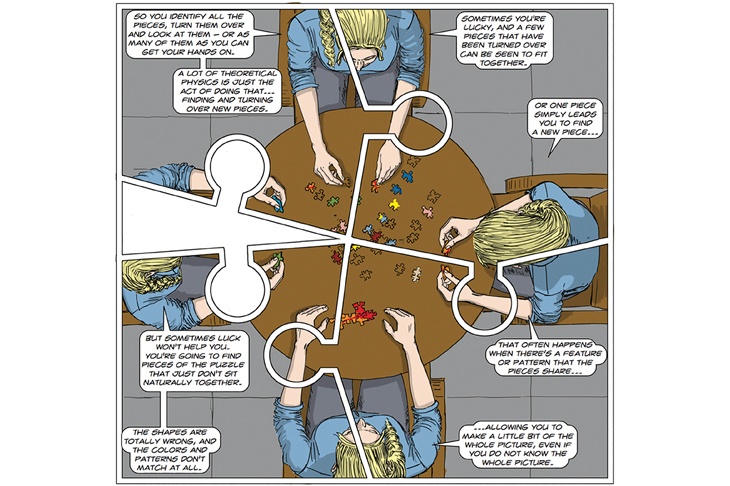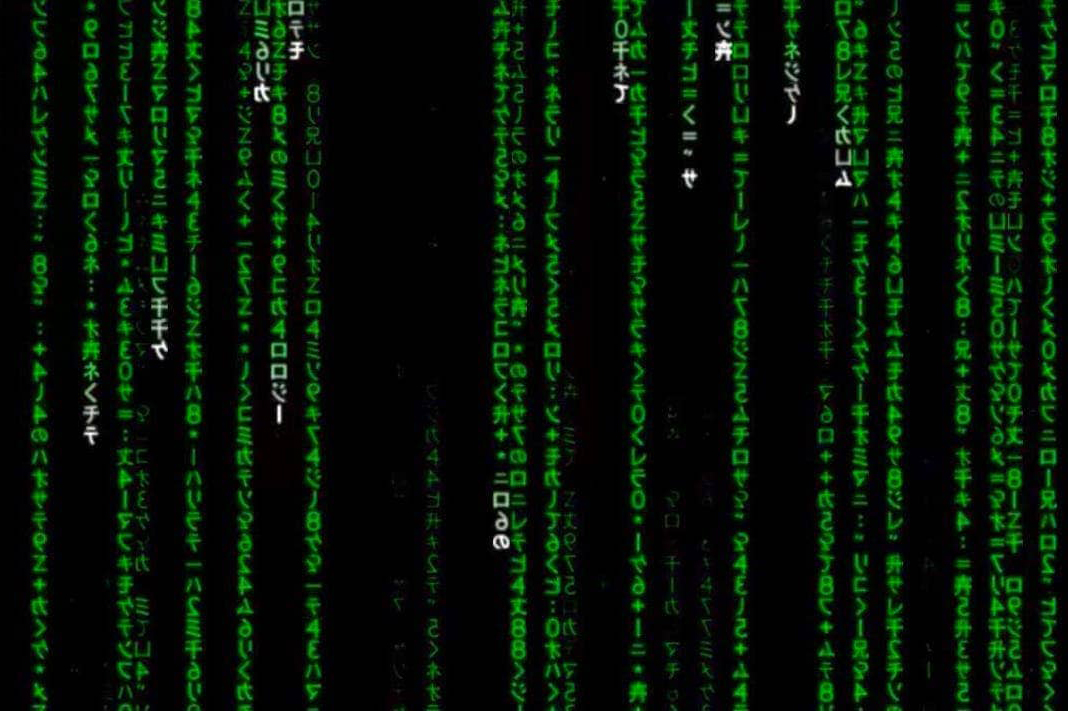We all know that physics and maths can be pretty weird, but these three books tackle their mind-bending subjects in markedly contrasting ways. Clifford V. Johnson’s The Dialogues is a graphic novel, seeking to visualise cosmic ideas in comic-book style. Darling and Banerjee’s Weird Maths is a miscellany of fun oddities, ranging from chess-playing computers to prime-counting insects. Philip Ball’s Beyond Weird argues that we’ve got quantum mechanics all wrong: it’s not so weird actually, but quite sensible. All three books do a fine job for their respective audiences. Just make sure you know which target group you’re in.
The Dialogues is a sequence of illustrated conversations, often between pairs of youthful and attractive characters, scrupulously diverse in race and gender, who happen to meet in a café, gallery or train carriage, and find themselves talking about physics. Perhaps ‘The Lectures’ would be a better title, since one interlocutor is the expert, while the other is an interested lay person whose role is to feed questions at appropriate intervals.
The author shows himself to be a highly talented graphic artist as well as being a distinguished theoretician, and while the ping-pong chats may be somewhat lacking in narrative drive, they do provide a platform for some admirably lucid explanations of topics such as Maxwell’s equations or Einstein’s cosmological constant. Not the kind of comic book you roll up in your pocket, but a weighty hardback that would grace any coffee table.
Weird Maths is more traditional in concept, but remarkable for being co-authored by a 17-year-old maths prodigy and the popular science writer who has helped nurture the lad’s talent. The chapters cover a range of topics; and while higher dimensions, probability or code-breaking may be familiar to fans of the genre, others are delightfully abstruse. I especially enjoyed the section about ‘Ramsey theory’, which produces numbers too big to write down in any conventional way, instead requiring entirely new notation and giving rise to contests to see who can come up with the largest non-infinite number. If you think that adding one to your opponent’s offering would be sufficient, you ought to read this book.
Weird Maths is a step up from The Dialogues in technical detail, but still perfectly suitable for light dipping, and surely destined for many a geek’s loo shelf (mine, for instance). With Philip Ball’s Beyond Weird we get into something far meatier: the philosophical problems of quantum theory. Ball’s book is aimed at readers already familiar with the idea that particles can be in two places at once, or that a cat in a box can be simultaneously alive and dead, or that our alter-egos exist in parallel worlds. His aim is to argue that all those statements are false, or at any rate are misrepresentations of what the equations really mean.
Rather than being in two places at once, a particle such as a photon may be found in whichever place you look for it, as experiments have shown. Schrödinger’s Cat can be in quantum limbo only until its atoms interact with its environment, which happens long before anyone looks inside the box. As for the ‘many worlds’ theory beloved of science fiction aficionados and cosmologists including Stephen Hawking, Ball considers it a worse headache than the one that its inventor, Hugh Everett, was trying to solve: the issue of ‘wave function collapse’.
Beyond Weird is structured as a succession of myths needing to be busted, but the book is not negative or even especially controversial, instead presenting an excellent account of modern quantum theory and the efforts being made to harness its effects. Among the most newsworthy of these has been the development of ‘quantum computers’, which according to one interpretation would work by running simultaneous calculations in parallel worlds. Ball throws doubt on that view, saying instead that no one can quite decide exactly how they would work, or indeed whether they would be any better than a conventional computer, except for performing a few specific tasks. As for quantum teleportation, achieved so far only for single photons, Ball says:
When newspaper stories tell you that using it as a handy means of human travel is ‘still a long way off’, what they mean is that the fantasy has become confused with the reality.
What all three books illustrate is the great variety that now exists in popularisations of physics and maths, both in technical level and mode of presentation. What they share is a sincerely didactic aim. Stupefied wonder is all well and good, but science isn’t a magic show, and each of these authors is intent on showing exactly how the tricks are done. Which you might prefer is a matter of how much you’d like to know, and how much effort you’ll feel willing to put in.























